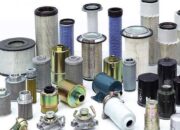Forklift rental
Samcovina Company is one of the leading and long-standing units in the field of forklift sales and rental. We specialize in renting forklifts of all kinds, which are completely imported from famous forklift brands in the world with extremely favorable rental prices to all customers in Ho Chi Minh City. Ho Chi Minh City, Binh Duong, Dong Nai, Long An and surrounding areas.
SAMCOVINA’s forklift rental price will not be universally applied to all forklifts, but will be offered at different rates depending on the following factors: Type of forklift that customers want to rent, weight of goods need to transport, location to use the forklift, number of hours, number of shifts, rental period, and accompanying policies when renting a forklift such as maintenance, maintenance, hiring a driver, etc. Rental price Our forklifts always keep stable for a long time and there are many incentives for customers to rent forklifts in the long term. Samcovina guarantees all customers to rent the best quality forklifts.
car rental
Types of forklifts for rent
New brands of forklifts imported CBU or used are imported directly from famous manufacturers of lifting equipment such as: Toyota, Komatsu, Mitsubishi, TCM, Cat… rented at Samcovina Company. All forklifts sold and rented by Samcovina are sourced from Japan, Europe, and the US, ensuring extremely stable and safe operation. Samcovina provides all types of forklifts with loads in lifting from light loads and lifting heavy loads up to 45 tons to serve customers who need to lift heavy items and arrange goods on the road. high with the feature of lifting height from 3 meters to 12 meters.
Coming to Samcovina company, customers will not have to pay in advance or deposit any fees, all costs will be paid after the job is completed or agreed to be paid monthly according to a good agreement. between the two parties, fully committed to not have any costs incurred during the performance of the contract.
Forklift rental address
Why is Samcovina’s forklift rental service flourishing in Binh Duong, Dong Nai, and Ho Chi Minh City? Ho Chi Minh and neighboring provinces? – car rental in tai binh duong
Samcovina Joint Stock Company has 3 main car parks located in Binh Duong, Dong Nai and District 9, City. Ho Chi Minh City with a total warehouse area of nearly 10 thousand square meters. New and used forklifts are continuously imported by our company and stored in 3 different warehouses to facilitate customers to buy and choose to rent a forklift that is suitable for their needs. their own work.
In addition, the consulting team always listens and finds the best solution for you. A team of skilled technicians and engineers are evenly distributed in the car parks of Samcovina company to help solve problems as quickly as possible without having to wait time to allocate personnel from one place to another.
Forklifts with a variety of models, types, brands… are always available to meet your forklift rental and purchase requirements.
All forklifts of Samcovina company are regularly maintained, checked and always in a state of readiness for operation. In the case when renting a car to your unit, the operation is not good or it is not suitable for the actual needs of your warehouse, we are ready to replace or change another forklift immediately without having to spend a lot of money. add any additional costs.
We are always the unit that sells and rents forklifts, forklift spare parts (electric, pneumatic, diesel forklifts…) with the most appropriate, competitive selling price and rental price and aiming for professional quality. most professional. To keep that for a long time, we are constantly looking for the best suppliers of lifting equipment and genuine spare parts to satisfy our customers. On the other hand, Samcovina is also constantly looking for and recruiting skilled, experienced engineers and technicians to regularly check, maintain, and maintain vehicles to ensure that all of our forklifts arrive. Your hands are all working smoothly and efficiently.
In addition to lifting equipment in the warehouse, in the port, we also provide the rental service of hand pallet trucks, pallet trucks, semi-automatic forklifts, electric forklifts … cheap by day, week or month.
Forklift rental service
When you come to us, the consulting staff will provide you with full information about the service, helping customers easily choose the type of car, the form of car rental or buying a car in accordance with the job requirements, as well as receive the most preferential forklift rental quote. The most special thing only in our company Samcovina is that for customers who want to buy a new forklift but the financial resources allocated for owning a new forklift are not enough, we have a banking service. support businesses/individuals to borrow to buy forklifts up to 70% of the vehicle value and pay in installments over a very long time (
cho thuê xe nâng hàng, xe nâng hàng






